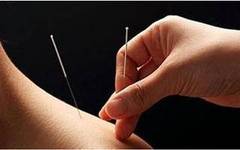Acupuncture for treating diseases requires mastery of three important aspects: differentiation of syndromes, selection of acupuncture points, and techniques. Only by integrating theory, methods, and point selection can one achieve better results. Here, I share some experiences regarding acupuncture techniques based on my study of relevant literature and decades of clinical practice, hoping to provide guidance to fellow practitioners.
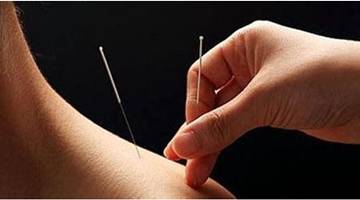

1、Common Basic Acupuncture Techniques
1.1 Insertion Technique — Gentle and Painless
Insertion is the first and a very important step in the entire acupuncture technique. Minimal or no pain during insertion is crucial for patients’ acceptance of acupuncture treatment, thus practitioners must achieve skillful and gentle techniques. The specific operation is as follows:
(1) Rapid Insertion Technique: During insertion, the left thumb or index finger presses on the acupuncture point, while the right hand’s thumb, index, and middle fingers hold the lower end of the needle, with the ring finger supporting the needle body. The needle is positioned against the edge of the pressing finger’s nail. During insertion, apply slightly more pressure with the left hand, and use wrist and finger strength to quickly press the needle into the subcutaneous layer, then slowly insert or slightly twist the needle to the desired depth. This method is more suitable for needles within 1.5 inches. For longer needles, the thumb, index, and middle fingers can hold the lower end of the needle, and with the cooperation of the pressing hand, apply pressure and insert quickly, then insert or twist to a certain depth. If inserting into superficial skin areas or using the penetrating technique, the rapid insertion method can be modified to combine lifting and pressing techniques. As long as the positioning is accurate, these insertion methods generally achieve minimal or no pain. As the ancients said: “The needle should enter quickly; once in, proceed slowly”; “The left hand applies pressure to disperse qi; the right hand enters lightly and slowly to avoid pain”.
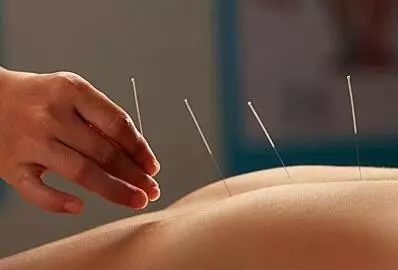
(2) Slow Twisting Technique: In coordination with the pressing hand, use light, slow, and delicate twisting with slight added pressure to twist into the subcutaneous layer. This method is often used for abdominal acupuncture points and for patients with weak constitutions. In summary, different insertion techniques can be applied based on different locations, but the cooperation of both hands is crucial. As the ancients said: “Those who know how to needle trust their left hand; those who do not trust their right hand.” This is indeed a piece of experiential wisdom.
1.2 Manipulation Technique — Various Techniques to Achieve Qi
After insertion, applying certain techniques is called manipulation. Manipulation techniques are an important component of basic acupuncture techniques. The lifting and thrusting technique and the twisting technique are the most commonly used methods in manipulation, and must be mastered and applied freely, as they are directly related to achieving qi, which is a prerequisite for therapeutic effect and the basis for performing acupuncture tonification and sedation techniques.
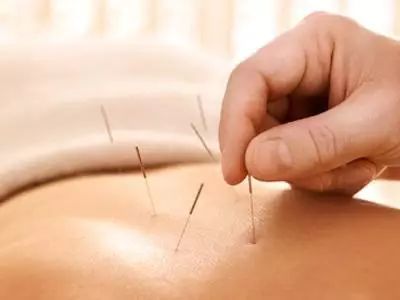
(1) Lifting and Thrusting Technique: After the needle reaches a certain depth, lift and thrust evenly up and down until a sinking and tight sensation is felt under the needle, like the sinking and floating of a fish swallowing bait, indicating that qi has not yet arrived, similar to the depth of a secluded hall. This technique stimulates the arrival of qi (or qi to the disease location) and is a commonly used method. When performing tonification and sedation techniques, heavy thrusting and light lifting is for tonification, while light thrusting and heavy lifting is for sedation.
(2) Twisting Technique: After insertion, twist evenly with the thumb and index fingers to stimulate qi arrival, or combine lifting and thrusting with up and down twisting to accelerate qi arrival. When applying tonification and sedation techniques, increase the force of the thumb forward while slightly reducing the force of the index finger backward for tonification. Conversely, reduce the force of the thumb backward while slightly increasing the force of the index finger forward for sedation.
(3) Rubbing Technique: If qi is not achieved using the above methods, the rubbing technique can be used, which involves twisting the needle in one direction several times. This often allows qi to arrive, then twist the needle back in the opposite direction 1-2 times, followed by light lifting and thrusting 1-2 times, ensuring not to cause needle stagnation. After using this method, qi can generally be achieved more quickly.
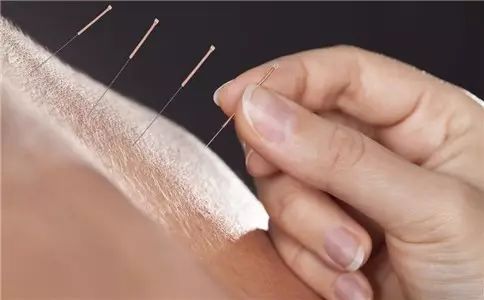
(4) Auxiliary Techniques: Other auxiliary techniques such as bouncing, circling, scraping, shaking, flying, and bow techniques all have certain effects on stimulating qi and promoting qi flow, or one can leave the needle in place to wait for qi for a moment before performing manipulation techniques.
1.3 Retaining the Needle — Flexible Application of Duration Retaining the needle involves leaving the needle in the acupuncture point after applying certain techniques to enhance the sustained effect of the needle sensation. Currently, there are two common methods: dynamic retention or static retention.
(1) Dynamic Retention: During the retention process, combine twisting or lifting and thrusting techniques (or other tonification and sedation techniques) at intervals, such as electro-acupuncture also falls under dynamic retention.
(2) Static Retention: After achieving qi or performing manipulation, “remain still for a long time” before withdrawing the needle. The use of dynamic or static retention, as well as the duration of retention, must be flexibly applied based on the patient’s condition and the acupuncture site.
1.4 Withdrawal Technique — Coordinated Use of Both Hands, Gentle Twisting and Lifting
After completing the treatment, the needle can be withdrawn. During withdrawal, continue to press on the acupuncture point (preferably using a disinfected dry cotton ball to press beside the needle hole), perform small amplitude gentle twisting while lifting, and gently withdraw the needle from the skin. If bleeding occurs at the needle hole, press with a dry cotton ball for a moment and wipe it. If using bloodletting treatment, do not close the hole (according to tonification and sedation methods, close the hole quickly for tonification, and do not close the hole for sedation).
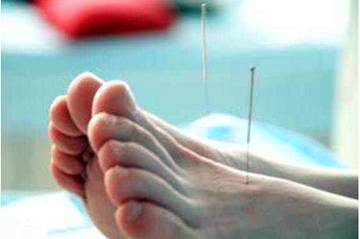
2、Application of Tonification and Sedation Techniques
In acupuncture treatment, it is essential to apply different tonification and sedation techniques based on correct syndrome differentiation to achieve better results. Throughout history, many physicians have created various operational methods for tonification and sedation. Here, I summarize classical techniques and those refined from my practice, as follows for fellow practitioners’ reference.
2.1 Burning Mountain Fire, also known as “Heat Tonification Technique”
This technique is a combination of tonification methods from single techniques such as breathing, slow and fast, lifting and thrusting, twisting, nine-six, and opening and closing. The specific operation method is to first determine the depth of needle insertion at the acupuncture point, dividing it into three equal parts (anciently referred to as “Heaven, Man, Earth”). During exhalation, insert the needle to the Heaven part, applying tight pressing and slow lifting (heavy thrusting and light lifting) nine times, then insert the needle to the Man part, again applying tight pressing and slow lifting nine times, and finally insert to the Earth part, applying tight pressing and slow lifting nine times (this can also be combined with twisting). If warmth is felt, withdraw the needle from the Earth part to the Heaven part, withdrawing during inhalation and quickly closing the hole. If no warmth is felt, repeat the above method multiple times before withdrawing the needle.
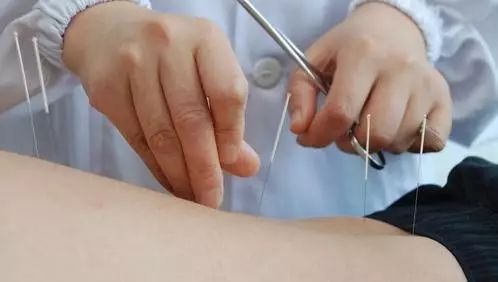
My operational method: Based on achieving qi, insert the needle 1-2 fen (“bean distance”), perform heavy thrusting and light lifting multiple times, then use the thumb forward and index finger backward to twist in one direction multiple times, firmly holding the needle handle to prevent qi from dispersing (ensuring the needle tip does not lose its sensation), enhancing the qi sensation or producing warmth. If ineffective, this can be repeated several times. During withdrawal, retreat the thumb 1-2 times and perform light lifting and thrusting 1-2 times to prevent needle stagnation, then quickly withdraw from the skin and close the hole. This method has a warming and qi-regulating effect, often used for cold numbness, cold paralysis, and cold-related diseases.
2.2 Penetrating Heavenly Coolness, also known as “Cool Sedation Technique”
This technique is a combination of sedation methods from single techniques such as breathing and slow and fast. The specific operation method is to insert the needle during inhalation, reaching the Earth part, applying slow pressing and tight lifting (light insertion and heavy lifting) six times, then retreating to the Man part; applying slow pressing and tight lifting six times, then retreating to the Heaven part; applying slow pressing and tight lifting six times for one degree. If no cool numbness is felt, repeat the procedure multiple times according to the previous method, withdrawing the needle during exhalation, and do not close the hole during withdrawal (or enlarge the hole).
My operational method: Based on achieving qi, withdraw the needle 1-2 fen (“bean distance”), then repeat heavy lifting and light thrusting multiple times, followed by twisting in one direction with the thumb backward and index finger forward multiple times, firmly holding the needle handle to prevent qi from dispersing, enhancing the qi sensation or producing cool numbness. If ineffective, this can be repeated several times, and during withdrawal, enlarge the needle hole or apply slow pressure to the hole. This method has a cooling effect, commonly used for heat-related paralysis or acute swelling and pain, and for diseases with excess heat.

2.3 Yang Within Yin, First Tonify Then Sedate
According to Ming Dynasty’s Yang Jizhou in “The Great Compendium of Acupuncture and Moxibustion, Yang’s Tonification and Sedation”: “When using needles, first insert five fen, then perform nine yang manipulations. If a slight warmth is felt, then withdraw to within one inch, and perform six yin manipulations to achieve qi. This is called Yang within Yin, and can treat conditions of first cold then heat, first tonifying then sedating.”
My operational method: Based on the depth of the acupuncture point, perform operations in two layers: first perform tonification at the shallow level (tight pressing and slow lifting multiple times and twisting forward several times, holding the needle handle for a moment), then insert to the deep level and perform sedation (tight lifting and slow pressing multiple times or twisting backward several times), pause briefly, then withdraw the needle. This is a method of simultaneous tonification and sedation, often used for conditions of first cold then heat, with a mix of deficiency and excess, implying tonification within sedation.
2.4 Yin Within Yang, First Sedate Then Tonify
According to “The Great Compendium of Acupuncture and Moxibustion, Yang’s Tonification and Sedation”: “When using needles, first insert one inch, then perform six yin manipulations. If a slight coolness is felt, then withdraw to five fen, and perform nine yang manipulations to achieve qi. This is called Yin within Yang, and can treat conditions of first heat then cold, first sedating then tonifying.”
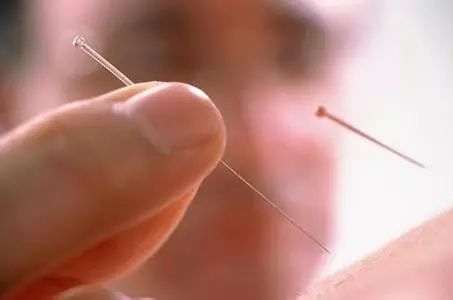
My operational method: In contrast to Yang within Yin, first insert the needle to the deep level and perform sedation (tight lifting and slow pressing and twisting backward several times), pause briefly, then lift the needle to the shallow level, perform heavy thrusting and light lifting, twisting forward several times for tonification, pause briefly, then withdraw the needle and press the needle hole. This is also a method of simultaneous tonification and sedation, often used for conditions of first heat then cold, with a mix of excess and deficiency, implying sedation within tonification.
3、Points to Note
In clinical practice, as long as syndrome differentiation, point selection, and techniques are appropriate, one can generally achieve effective results. However, during specific operations, careful observation is necessary. For a particular patient or condition, a specific technique at a certain stage should not be rigidly applied; clinical effectiveness must be the standard for evaluation. Therefore, adjustments should be made based on the individual, the disease, and the timing to achieve the best effect.
If you like, please like  +Watch it
+Watch it 
Let more people see it!▼

